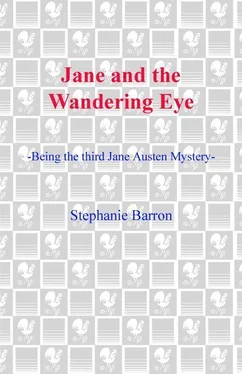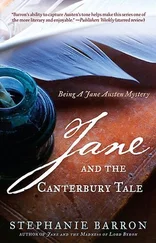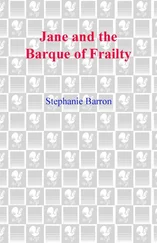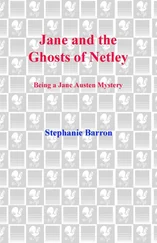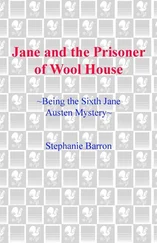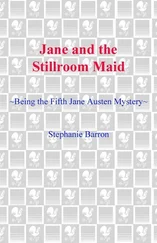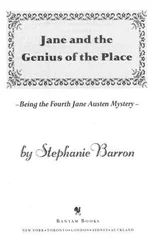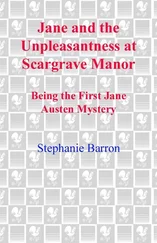Women rarely attended funerals in Austen’s day, it being considered the province of a family’s male members to follow the body to both chapel and cemetery. The best a bereaved woman might do was to read Divine Service in the privacy of her home. — Editors note.
In August 1799, Jane Leigh-Perrot was accused by a shopkeeper in Bath Street of stealing a card of white lace, which was found wrapped with some black lace she had purchased in the establishment. She denied the theft — and was probably framed by the shopkeeper, who knew that the monetary value of the stolen lace — in excess of twelve pence — made the theft a capital crime, punishable by death or transportation to Australia. Blackmail was probably the object, and when the Leigh-Perrots refused to pay for silence, they were imprisoned together at Ilchester gaol for seven months before Mrs. Leigh-Perrot’s trial and acquittal. Austen scholar Park Honan points out, however, that Mrs. Leigh-Perrot’s defense attorney thought she was a kleptomaniac who got off. — Editor’s note.
Charades formed a part of Christmas revels in England throughout the eighteenth, nineteenth, and early twentieth centuries. They took two forms — the recitation of a riddle, the first part of which defined the first syllable of a word, and the second its ending; or the presentation of a short play, designed to illustrate each syllable and the word as a whole. Several charades thought to be composed by James Leigh-Perrot and Jane Austen can be found in Jane Austen: Collected Poems and Verse of the Austen Family (David Selwyn, ed., U.K.: Carcanet Press Ltd., 1996). Mr. Leigh-Perrot’s are sweet but obvious, while Jane’s are brief and fiendishly clever. — Editor’s note.
The Waits were a group of carolers often paid by the mayor of a town to sing at public functions or holidays. Over time, the term evolved to mean any group of Christmas carolers who performed for tips. — Editor’s note.
Maria Cosway and Thomas Lawrence collaborated on the 1801 portrait of the Princess of Wales and her daughter, with Mrs. Cosway completing much of the portrait’s ground, and Lawrence working on the principals’ faces. — Editor’s note.
Angerstein’s extraordinary collection was purchased by the nation following his death, and formed the basis of the National Gallery in the structure newly built for that purpose in Trafalgar Square. The Lawrence portrait of Angerstein — a friend and patron of many years’ duration — was painted between 1790 and 1795. It hangs in the National Gallery, London. — Editor’s note.
The portrait of Isabella Wolff, begun in 1802, is patterned after the pose of the Erythraean Sibyl on the Sistine Chapel ceiling. It now hangs in the Art Institute of Chicago. — Editor’s note.
The details of the Siddons girls’ love affairs with Thomas Lawrence, and their untimely ends — as well as the supposition that he sought them both out of a thwarted desire for their mother — can be found in The Kemble Era: John Philip Kemble, Sarah Siddons, and the London Stage , by Linda Kelly (New York: Random House, 1980). — Editor’s note.
The Upper Rooms, as they were called in Austen’s time to distinguish them from those in the lower part of town, are now called the Assembly Rooms. — Editor’s note.
This charade has long been attributed to Austen’s pen, but we learn here it was actually created by Lord Harold. — Editor’s note.
Henry Rice, Madam Lefroy’s son-in-law, although the curate of Ashe, was a confirmed gamester who ended his days in flight to the Continent, pursued for debt. — Editor’s note.
James Austen refers here to the death of Anne Lefroy’s second son, Anthony Brydges Lefroy, who was injured in a fall from a horse at the age of fourteen, and endured a lingering decline of some two years before dying in 1800. — Editor’s note.
